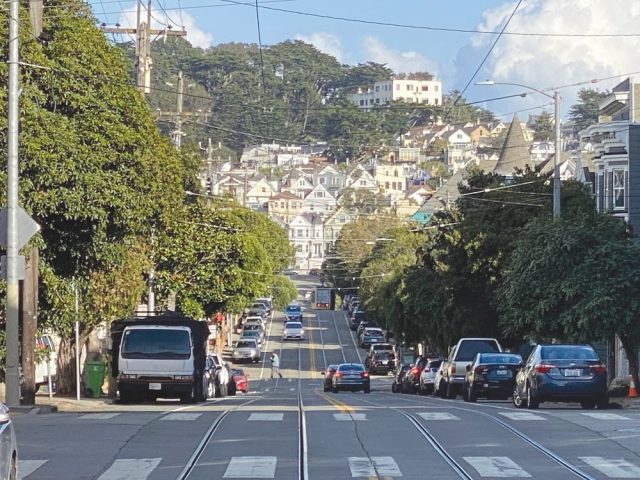Winter has finally arrived, and it’s almost time to put 2023 to bed. Couldn’t happen soon enough in the minds of many San Francisco real estate agents.
“Stop me if you’ve heard this before: prices are down because interest rates are up, prices are up because listing inventory is down,” said Matt Fuller, cofounder at Jackson Fuller Real Estate, when describing current market conditions.
“At an annual real estate luncheon in December of 2022, First Republic Bank predicted a bumpy 2023, and a drastically improved 2024,” he continued. “Well, they sure were right about 2023.”
And what’s ahead in 2024?
According to a housing and economic forecast released in late September by the California Association of Realtors, slower economic growth and cooling inflation will bring down mortgage interest rates in 2024 and create a more favorable market environment to spur California home sales next year.
But, really, who knows? It’s always a little frightening to think that a slowing economy is a good thing, something that should be welcomed.
In San Francisco, the current median single-family home sale price is about $1.6 million and the median condo sale price is roughly $1.1 million, according to a November Business Times report. The percentage of single family homes selling over list price in October was 69 percent. For condos, co-ops, and TICs that number was 34 percent. At the same time, on average, single-family homes in the city were selling for about 7 percent above asking price, while condos were trading at about 2 percent below asking. The number of price reductions in 2023 also peaked in October.
COMMISSION KERFUFFLE
On Oct. 31, a U.S. jury found the National Association of Realtors and some residential brokerages liable to pay $1.78 billion in damages for conspiring to artificially inflate commissions for home sales. The NAR said it plans to appeal.
In large part the plaintiffs were objecting to the fact that in the U.S. sellers pay the commission fees on residential real estate transactions, while buyers pay no commission fees.
Historically, the seller’s agent splits that commission with the buyer’s agent — for example, a typical 5 or 6 percent commission would be split right down the middle between the seller and buyer agents after the sale. The agents in turn share a portion of their commissions with their respective brokerages.
The thinking has been that the seller would be able to afford to pay the commission from the money received for the property. In contrast, if required to pay a commission, the buyer might be hard-pressed to come up with that additional money when purchasing a home, and the deal could be jeopardized. Of course, eventually buyers will pay a buyer’s commission, when at some point they choose to sell their home and can better afford it.
Commenting on the jury’s decision, Fuller said that for years tech billionaires have been seeking to disrupt the real estate industry. They see a labor-intensive business model, and lots of money up for grabs. They’ve felt that technology could replace real estate agents in the same way that it replaced travel agents. They have been uniformly unsuccessful in their efforts.
“When the billionaires failed to disrupt the real estate industry, they fell back to America’s favorite past time . . . litigation,” said Fuller. “Real estate agents have been singing the song of their impending doom since fax machines were going to destroy the industry in the 1980s. The Internet followed. Then Zillow. Then iBuyers. Do you see a pattern? Real estate is as expensive, byzantine, highly regulated, and intensely personal as ever.”
Fuller said that homes are an incredibly liquid asset that simply can’t be treated as a commodity in the marketplace. He argues that real estate brokers return the highest value to home sellers when they compete for listings and cooperate for sales. What’s more, he contends that people who want top-notch representation will continue to see value in the relationship that top-notch brokers and agents deliver.
FOR THE LOVE OF LISTINGS
As has been well documented, San Francisco is suffering from a lack of listings. Fuller pointed out there might be light at the end of that tunnel, but it might include some unforeseen consequences.
San Francisco is supposed to build 80,000 market-rate homes in the next eight years to comply with its state-mandated housing goals. If that’s even possible, in a city that averages 4,000 to 5,000 sales a year, what would adding 10,000 new homes a year on top of that do to values in the city’s real estate market? Only time will tell.
Where will all these new homes be built? According to Fuller, most of the development sites are south or east of I-280. And of course on Treasure/Yerba Buena Island, where 8,000 new homes are planned — and where he estimates less than 500 new homes have been finished as of 2023.
Feedback: letters@marinatimes.com





